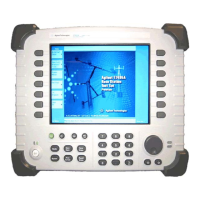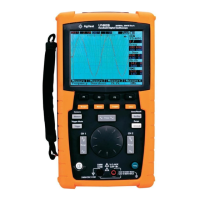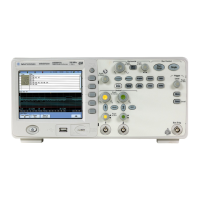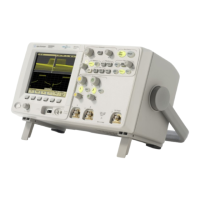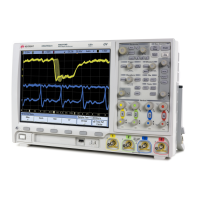Using Load Cards and Loads 5
E6198B Switch/Load Unit User Manual 5-41
Selecting a Power Supply Configuration
Each channel connects to the power bus via a Form C SPDT
(single-pole, double-throw) relay. This relay has a NO
(normally-open) and a NC (normally-closed) terminal. Each NO
terminal is connected to a pin on
J3– J8, and each NC terminal is connected to a pin on J10–J15.
Each pin on J3–J15 can be connected to any of the four power
busses on J9 via jumper wires. The terminal block jumpering
allows convenient pull-up or pull-down of the various inputs. It
also allows for terminating a UUT load at a different voltage
than ground.
The factory default is to provide two jumper combs, one that
ties all the pins on J3–J8 together and one that ties all the pins
on J10–J15 together. The NO pins are jumpered to power bus 2,
and the NC pins are jumpered to power bus 1. The jumper
combs for J3–J8 and J10–Jl5 can be easily cut to provide bus or
pin isolation between the various input/power bus connections.
Using the Power Switches as General Purpose Relays
The E6177A has a special feature that is not available on the
other E617x load cards. It has both the high and low side of the
load brought out to the front panel. This allows the load
switching relay to be alternatively used as a general-purpose
switching relay. For instance, to use channel 1 of the load card
as a general-purpose switching relay, jumper across the LOAD 1
pins on the load card.
When using a channel of the Agilent E6177A as a GP switch make
sure that neither the NO nor NC connectors for that channel are
jumpered to the load card power bus terminals on J9.
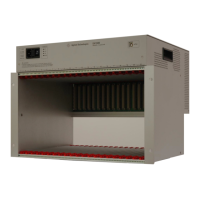
